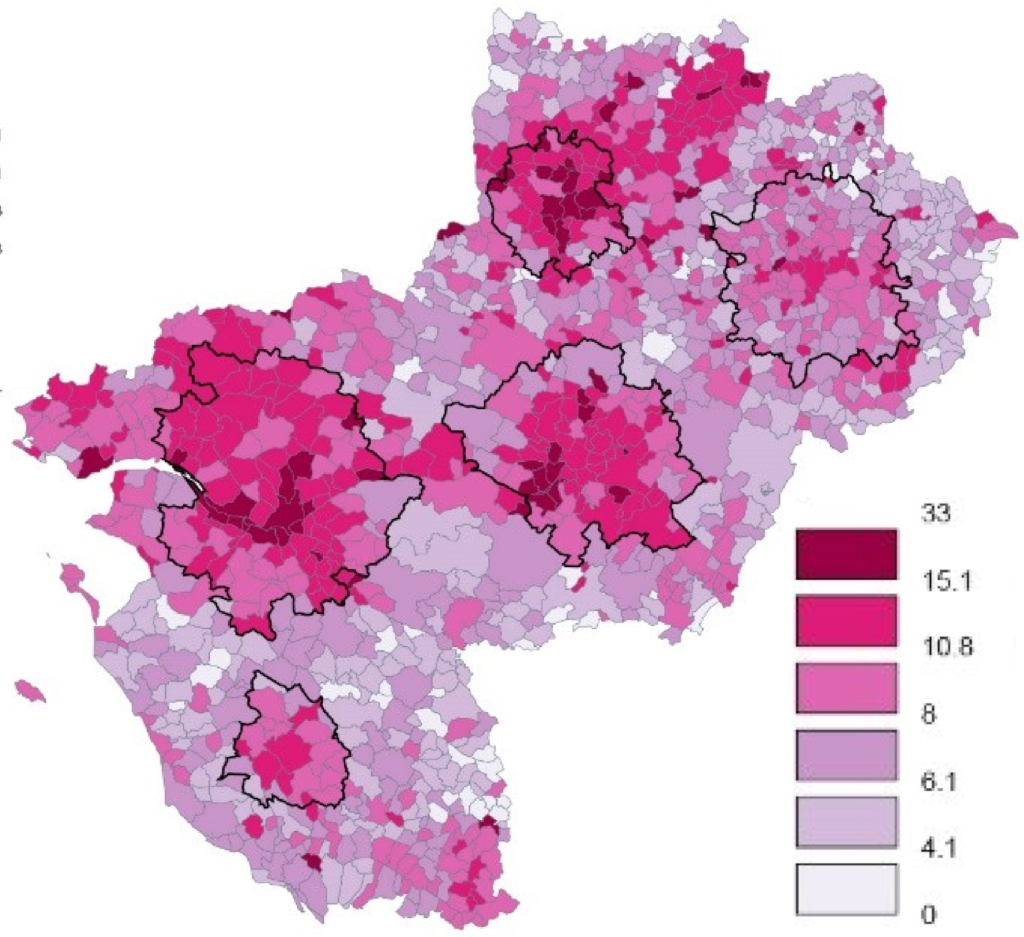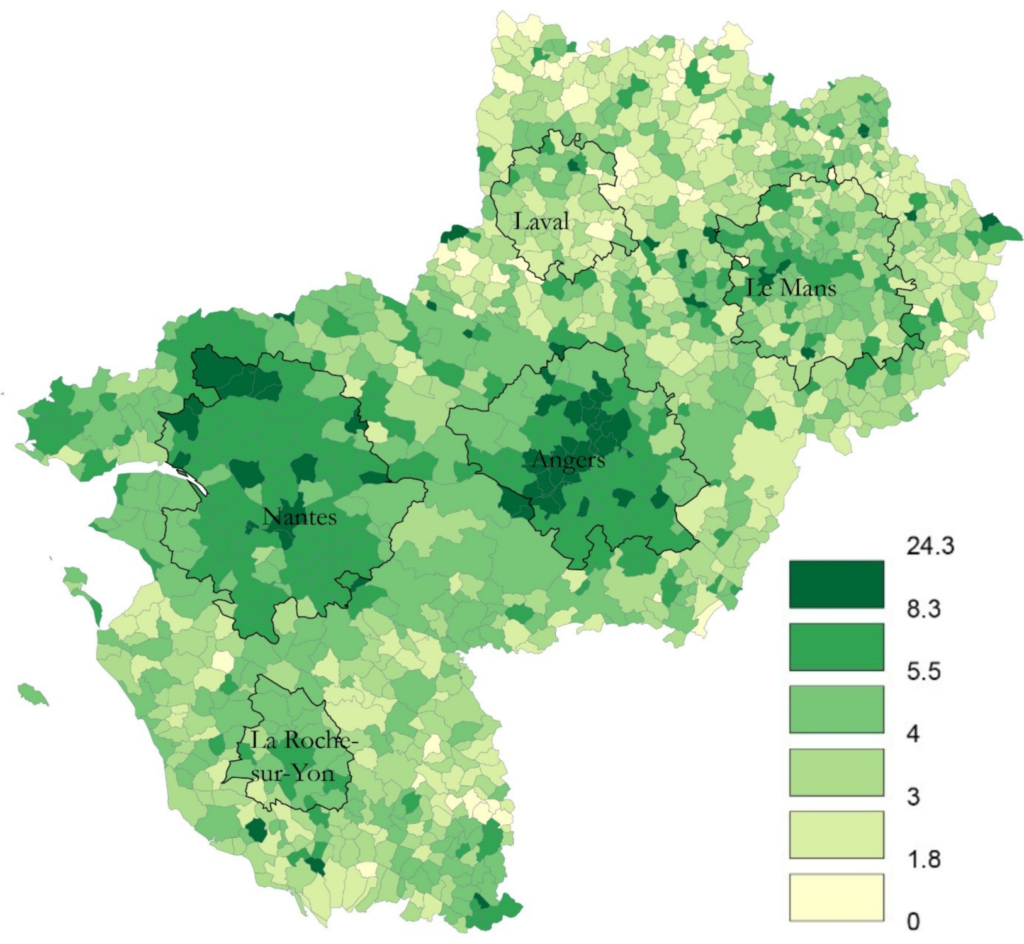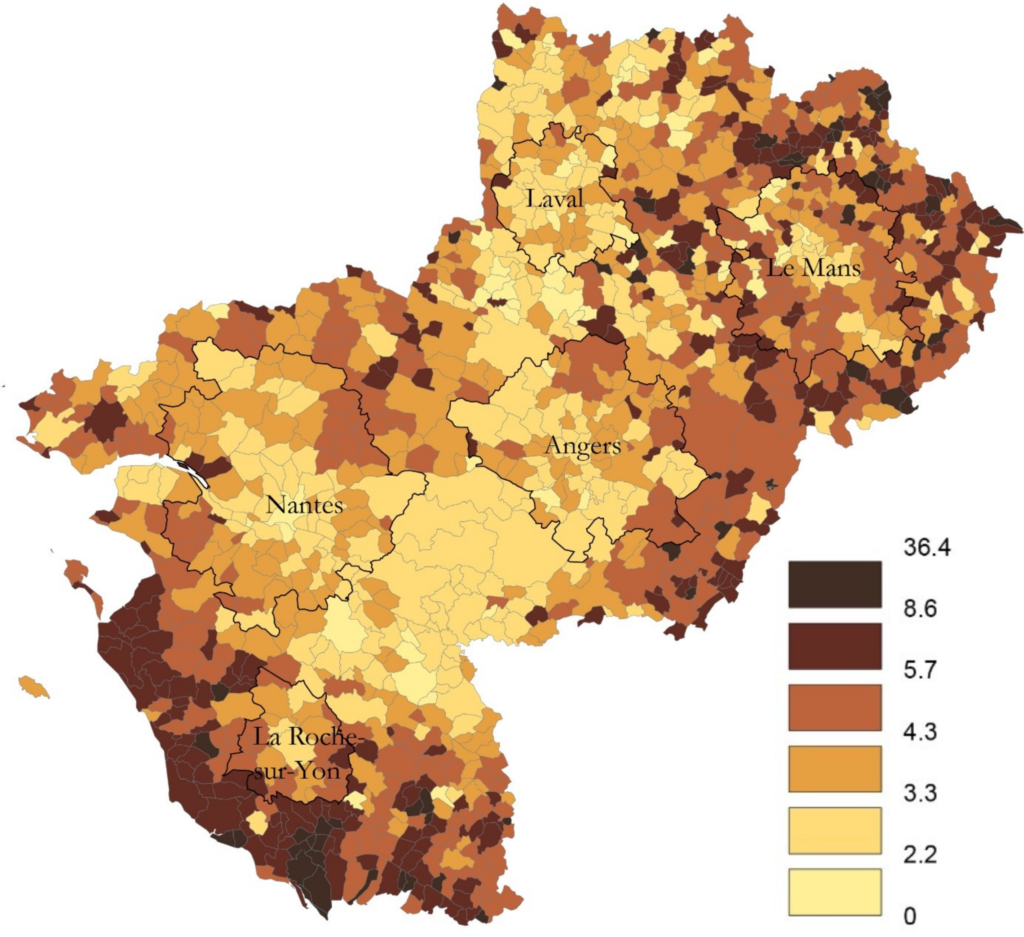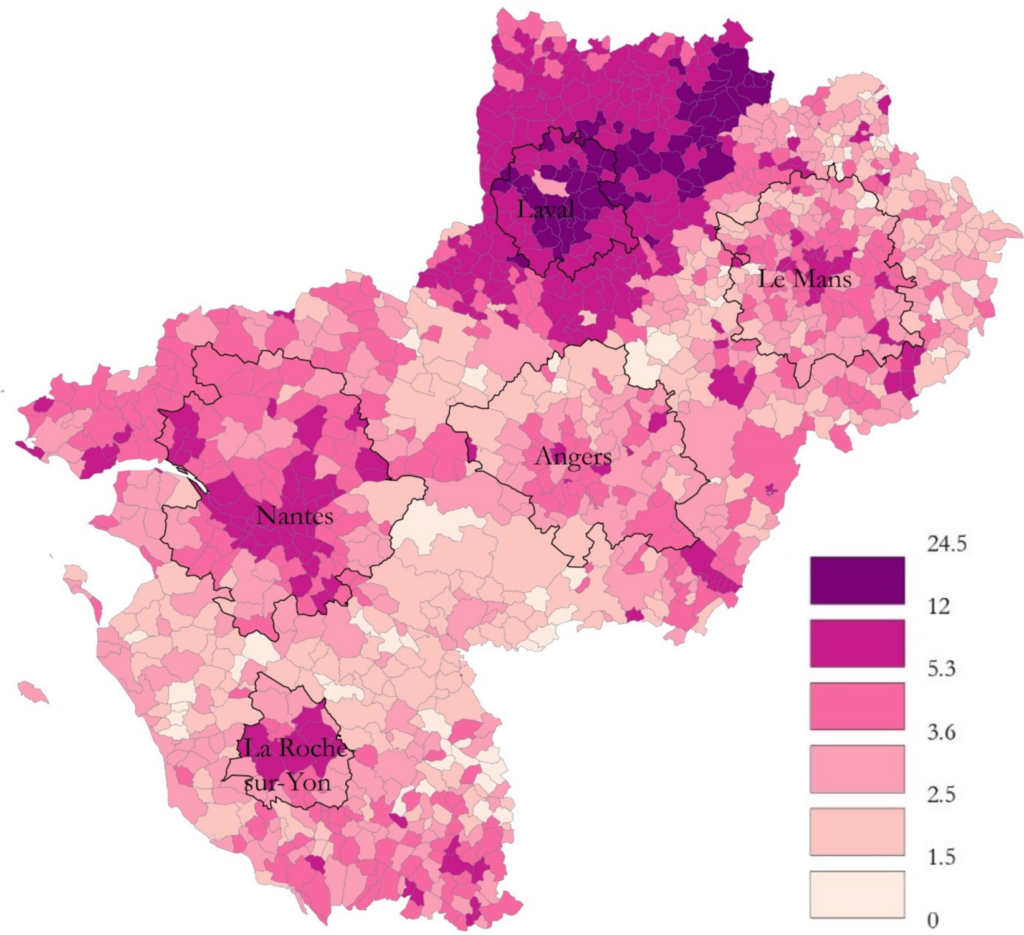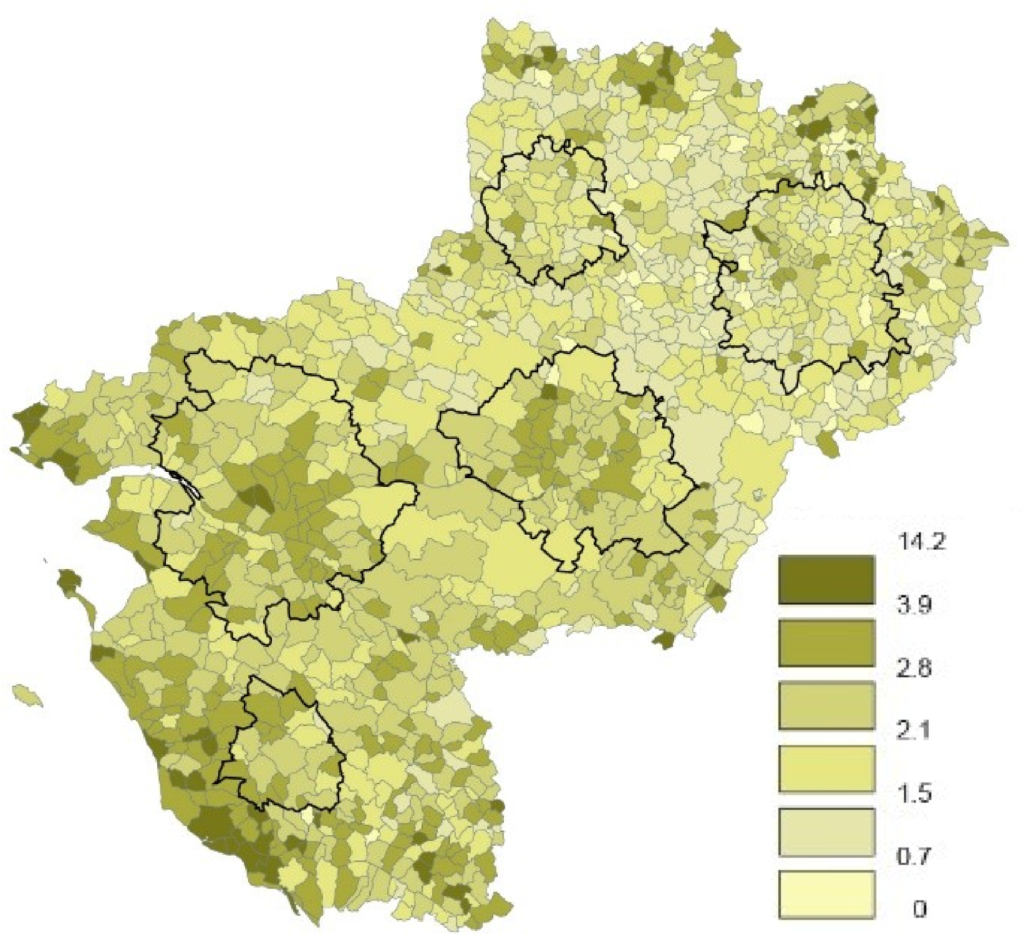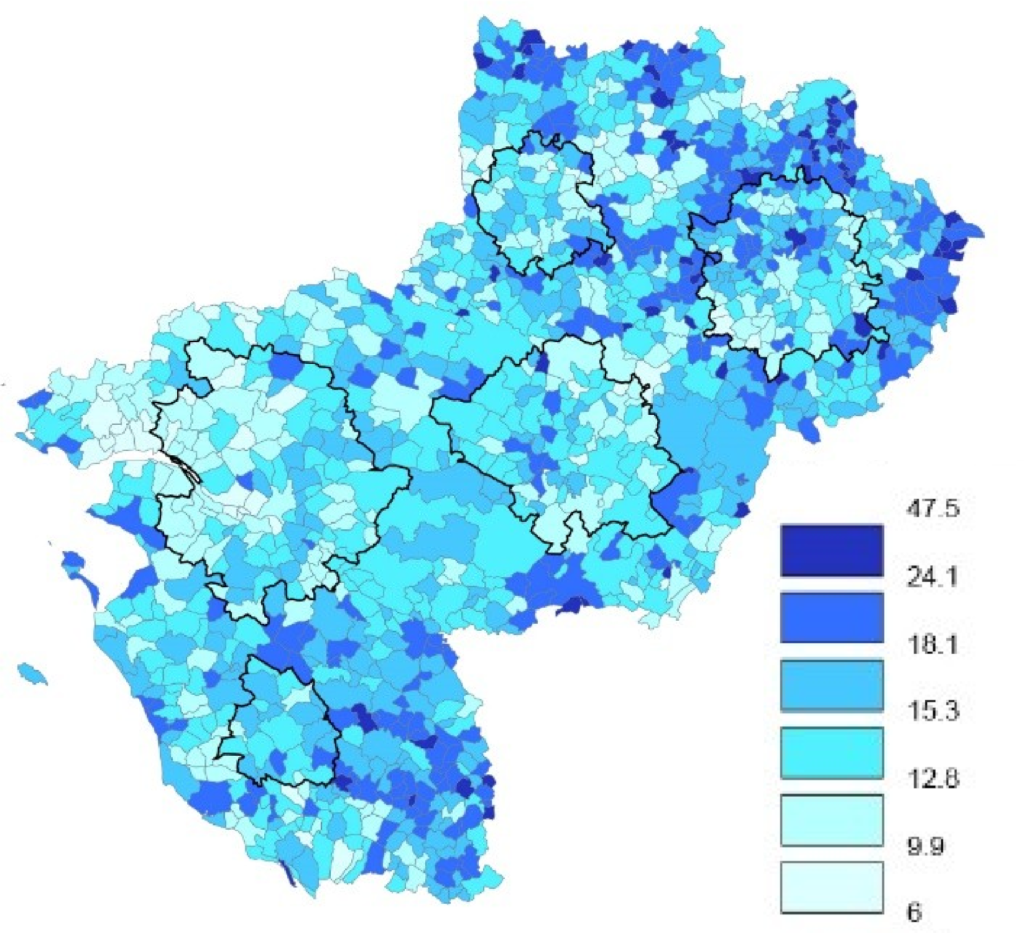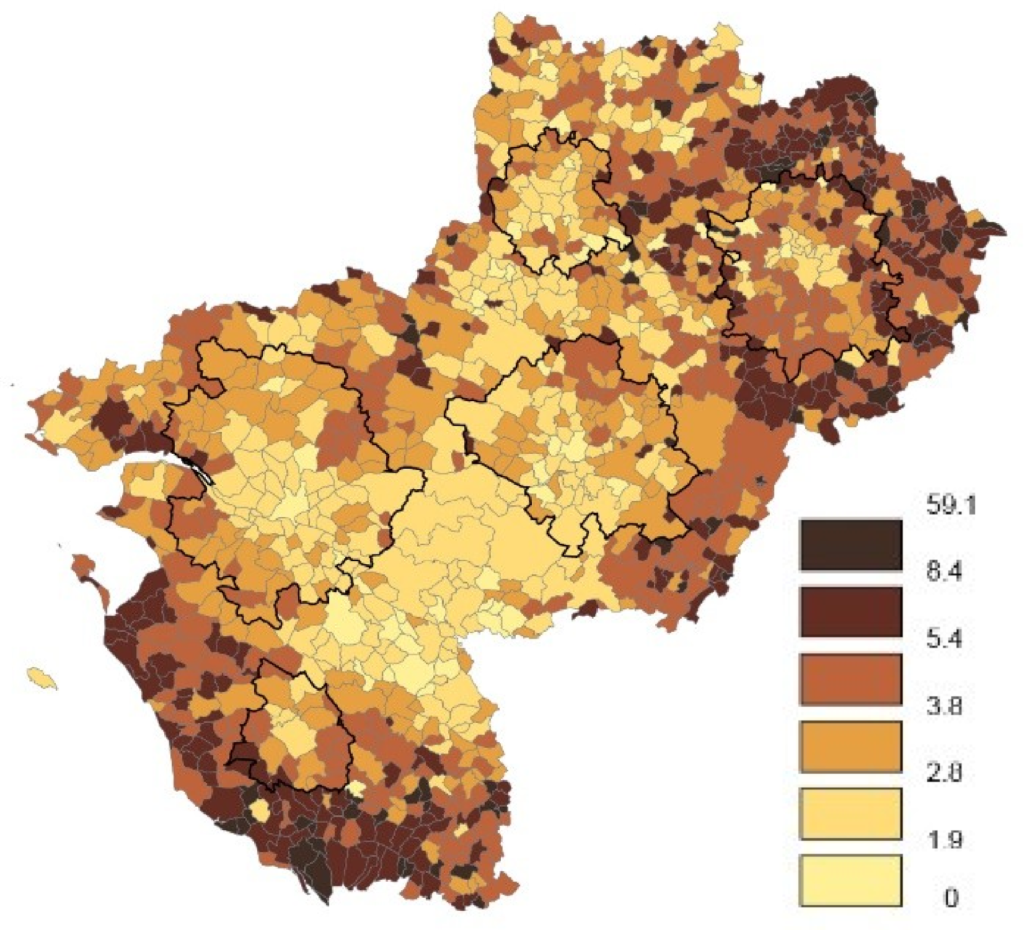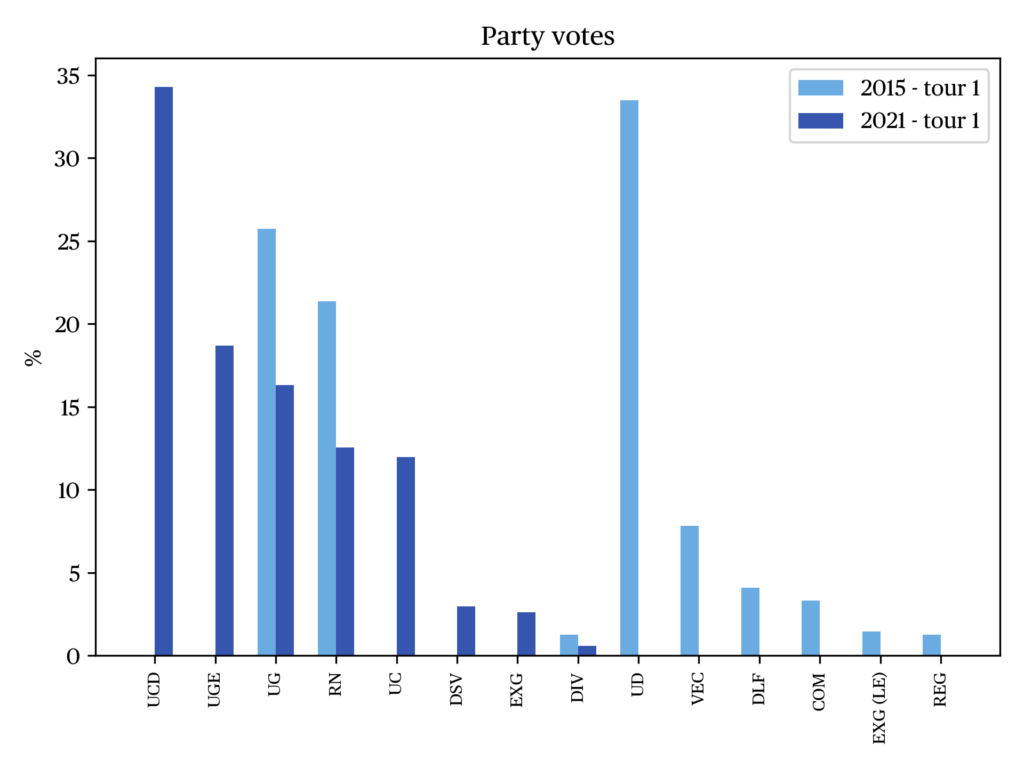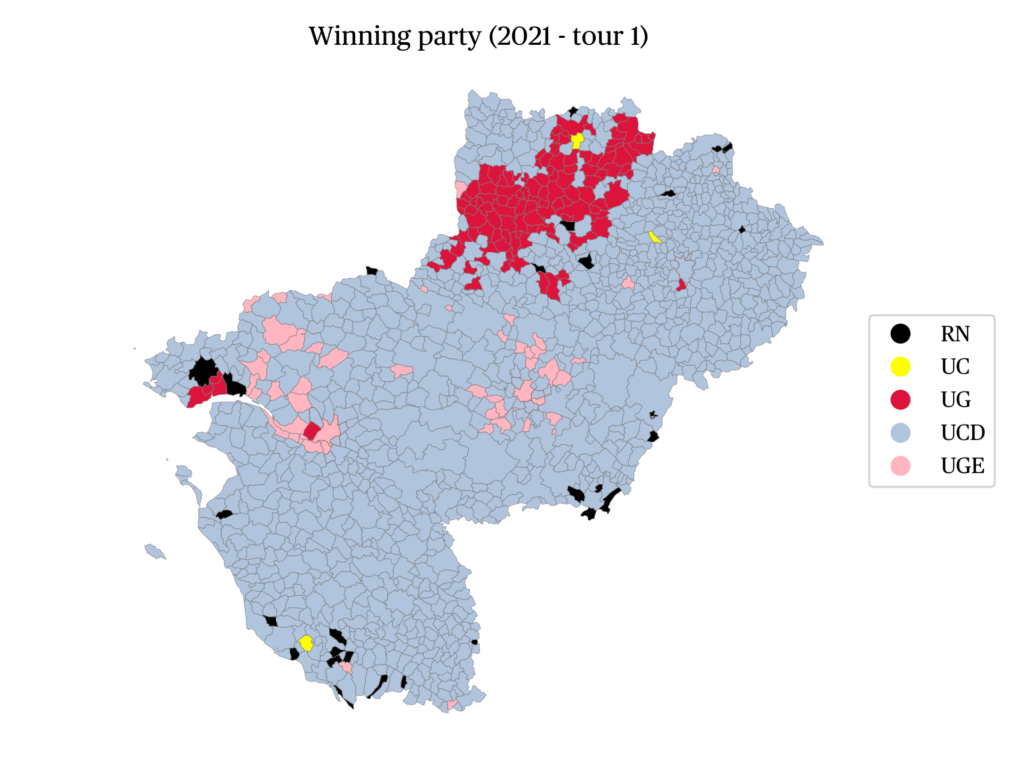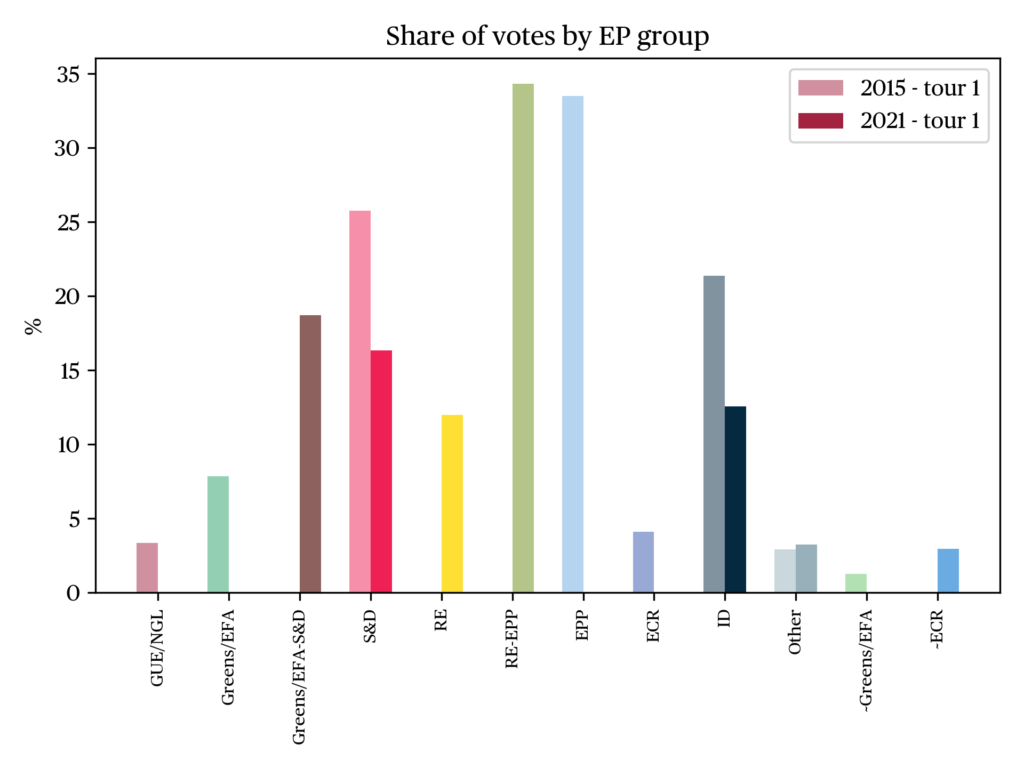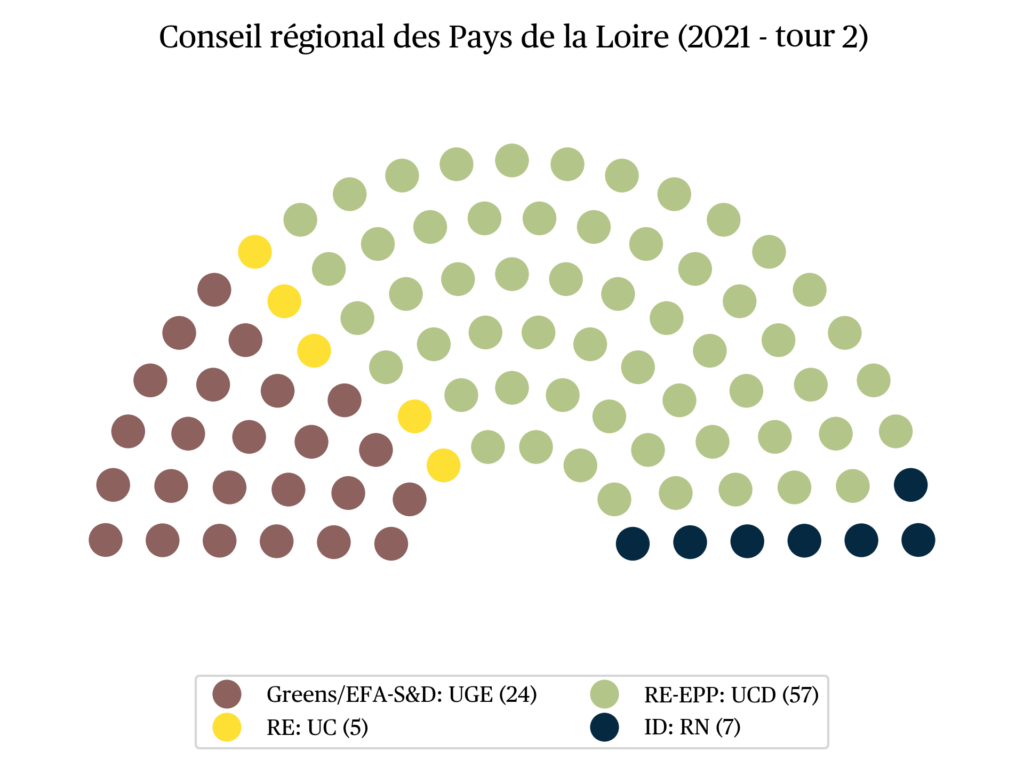Regional election in Pays-de-la-Loire, 20-27 June 2021
Christophe Batardy
Research engineer at the French Ministry of CultureIssue
Issue #2Auteurs
Christophe Batardy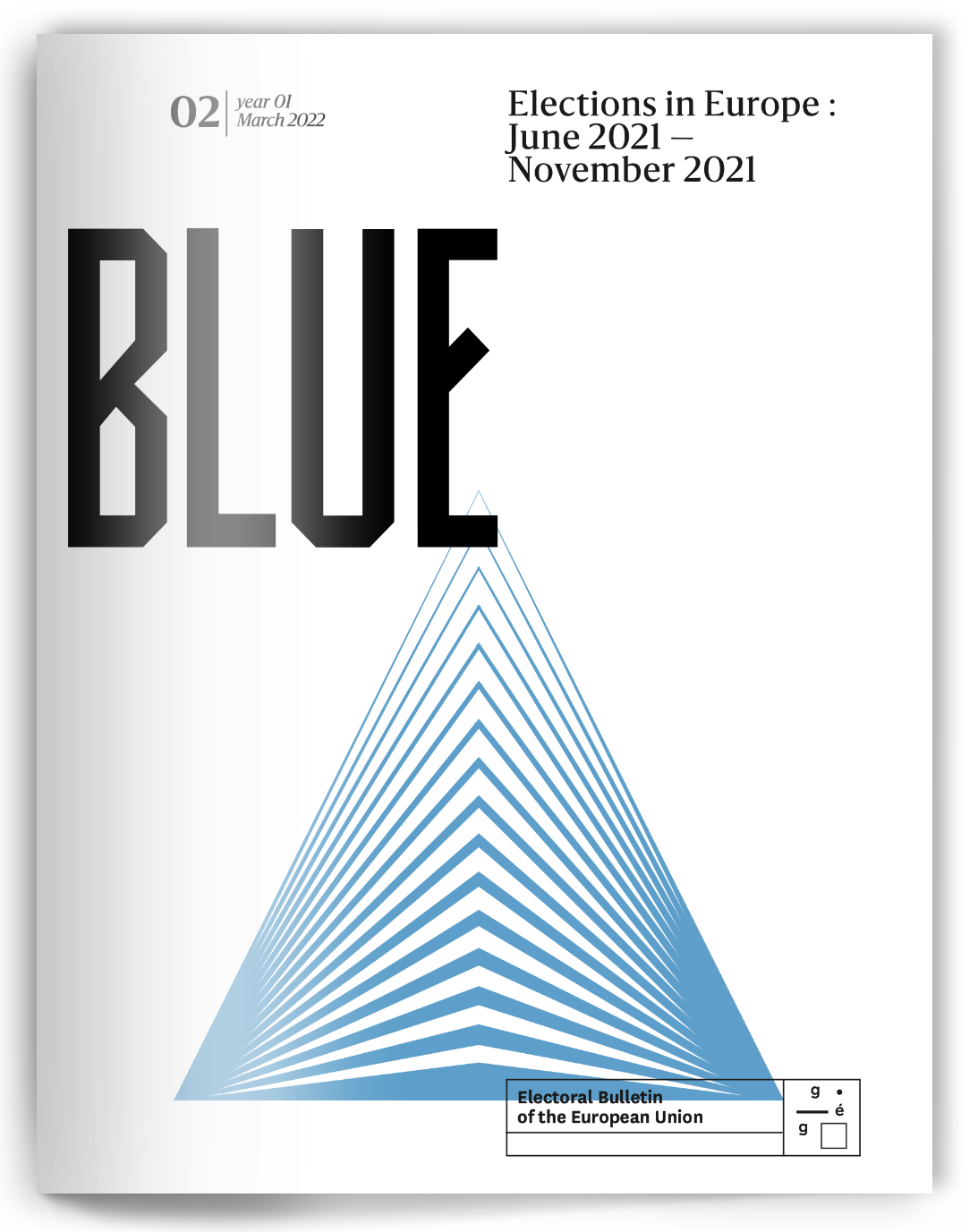
21x29,7cm - 167 pages Issue 2, March 2021 24,00€
Elections in Europe : June 2021 – November 2021
A regional election was held in Pays de la Loire on June 20 and 27, 2021. Originally planned to take place in March, the vote was postponed due to the health crisis. Unlike in other European countries (such as, e.g., Germany), French regional council elections are organized on the same day in all regions. Voters in the departments of Loire Atlantique, Maine-et-Loire, Sarthe, Vendée, and Mayenne were called upon to elect the same number of regional councillors as in 2015, i.e. 93. Since 2004, a two-round proportional list system with a bonus for the majority list has been in use.
The novelty of the electoral context should be emphasized. In 2021, regional elections were held the same day as departmental elections, which had not been the case in 2015, when departmental elections took place in March and regional elections in December. During the election campaign, the media attention given to the regional elections overshadowed the departmental elections, even though the departments’ responsibilities in social and educational matters are essential. In some polling places, assessors were told to inform voters that they had to go to the polling station next door for the election of the territorial councillors after having voted for the regional election. The results of the departmental elections were hardly commented on election night.
A high abstention rate
The vote took place in an unusual social context, in the second year of the health crisis. The first round of voting was marked, as everywhere in France, by a very high abstention rate of nearly 70%. The second round did not see a significant increase in mobilization with abstention only falling to 68%. None of the lists present in the second round particularly benefited from this slight increase in participation (no statistical correlation at the municipal level).
The observed abstention is much higher than in 2015 (50%). It is even more important if compared with that of 2004 — 38% — a year that saw the victory of the left, led by Socialist candidate Jacques Auxiette, for the first time in the region’s history.
It is striking to observe that while the west of France had been mostly spared from high abstention rates for several years compared to other French regions, in 2021, the Pays de la Loire region has experienced an abstention rate higher than the national average (65% on average in the second round in France compared to 68% in Pays de la Loire).
Results by list
In the first round of voting, Pays de la Loire voters could choose between 8 lists. The geographical patterns of municipality-level results reveal quite pronounced contrasts between territories and/or departments. While mapping these results can help identify and visualize local trends, the explanatory power of geography should not be overestimated. In fact, causal mechanisms can only be precisely explained at the level of polling stations, on the one hand, and, on the other hand, via a more in-depth analysis of the relationship between voters’ behavior and socio-economic variables (gender, age, social class, etc.).
The “List of the regional majority, Union of the Right, Center and civil society” led by outgoing President Christelle Morançais (LR, The Republicans) won a plurality of votes in the first round with 34% of the votes cast (10% of registered voters). Christelle Morançais and her fellow candidates focused their campaign on security issues, even though these did not fall within the competence domain of regional councils. In their program, they announced that they would oppose other candidates who support “the illegal occupation of sites by ultra-violent protesters”.
1
While emphasizing environmental concerns, Morançais opposed what she described as a “punitive and de-growth ecology”.
The highest scores of the list are obtained in the east of Vendée and in Sarthe. Voters in urban municipalities were less likely to vote in favor of this list, except in the La Roche-sur-Yon area.
The list led by Ecologist candidate Mathieu Orphelin (EELV), “Ecology Together: Citizens and Solidarity” brought together EELV (Europe Ecology — The Greens) and Unbowed France (FI). This alliance was one of the only ones of its kind in France. Ecology was a key aspect of their program, with the list committing for instance to 50% organic food in high schools. Security issues were also discussed; Orphelin advocated more human presence in schools, whereas Christelle Morançais’s list asked for the development of “safe” schools with surveillance cameras and security gates.
Orphelin’s list came in second place with 18.7% of the votes cast (5.7% of registered voters). It obtained its best scores in Loire Atlantique and Maine et Loire, in the communes of the urban area of Nantes and Angers.
The left-wing list “The Spring of Pays de la Loire”, led by Socialist Guillaume Garot and supported by the Socialist (PS) and Communist Party (PCF), came in third with 16% of the votes cast (4.8% of registered voters). During the campaign, Garot did not discuss security as a central theme. Among the first twelve measures he had pledged to take if elected, improving public transportation and fighting school dropouts in high schools played a key role. Guillaume Garot is mayor of Laval and a member of the National Assembly for Mayenne’s first constituency. Quite unsurprinsingly, his score was highest in his home department.
The far-right list of the National Rally (RN) led by MEP Hervé Juvin came in fourth with 3.7% of registered voters (12.5% of those who voted). The candidate announced his support for associations opposed to the development of wind power and offered to help communities in the fight against insecurity — a competence which the region does not possess. However, his result in the first round of voting was much weaker than the one obtained in 2015, were the National Front gathered 21.3% of the votes cast. Maps of the RN vote at the communal level show that the RN obtains its best scores in Sarthe — in the same communes as the centre-right lists in the South-West of Maine-et-Loire and in the communes of the Vendée coastline. On the other hand, few voters from urban areas voted for this list.
Second round
Christelle Morançais’ list won the second round with 46% of votes cast. The outgoing President of the regional council obtained a score (in percentage of votes cast) higher than her predecessor and former right-wing frontrunner Bruno Retailleau. Even if her list did not gain a majority of the popular vote, the bonus granted to the winning list ensured the centre-right a comfortable majority of 57 seats.
Between the two rounds, the list led by Socialist Guillaume Garot merged with that of Matthieu Orphelin. The PS and PCF joined EELV and FI. With a score of 34% of the votes cast in the second round, this merged list of the United left and Ecologists essentially obtained the sum score of the two lists in the first round. The merger did not trigger an electoral dynamic in their favor. Taking into consideration the broad political spectrum that the list represents, this result is rather disappointing.
Although François de Rugy’s “List of the presidential majority” supported by LREM advanced to the second round, their score in the first round (12% of the votes cast) was already a disappointment. But in the second round of voting, the list gathered only 8%, making for an even bitterer result. The list’s forerunner, a member of the National Assembly and former Ecology Minister, did not manage to anchor the party of Macron’s presidential majority in the regional electoral space, and was relegated to the role of an opponent. In Pays de la Loire, LREM failed to impose the middle way or centrist alternative they have built at the national level.
At the municipal level, the opposition between the Union of the Right and Center
2
and the RN on the one hand, and the Left and the Ecologists on the other, structures the electoral landscape.
3
Mapping the scores of the center-right and far-right lists, we see that similar geographical strengths and weaknesses emerge.
4
On the contrary, the left-wing list obtains its best scores in urban areas. However, it may be worth asking ourselves if this scale of analysis is appropriate. Other oppositions could have been uncovered if the analysis had been conducted at the polling station level. For example, while Nantes at first appears to be an all left-wing municipality, important counterpositions could be observed between polling stations during the 2017 presidential election (Batardy 2018).
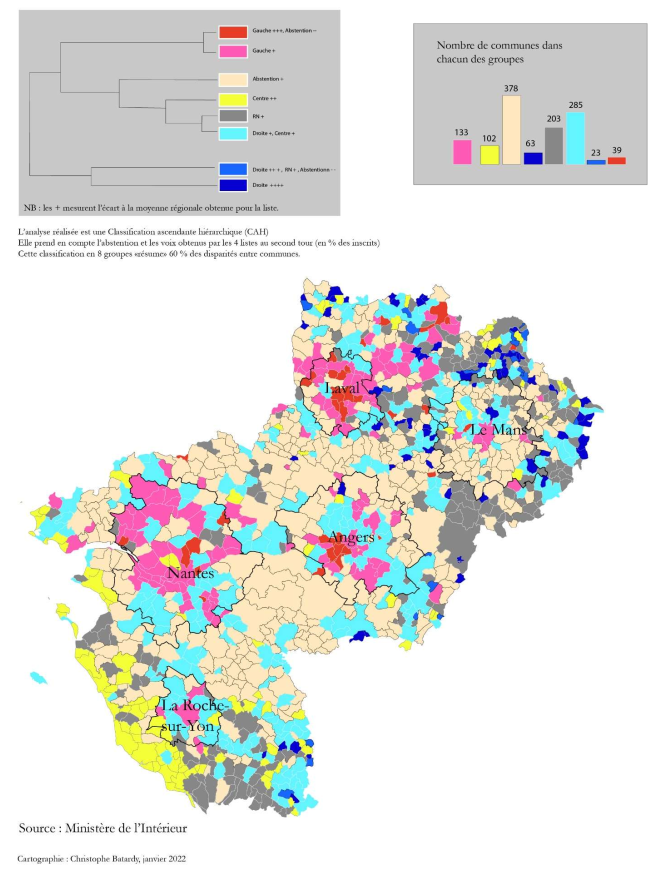
Conclusion
The outgoing right-wing regional executive has been re-elected. The failure of LREM, for its first regional election, and that of the RN are a disavowal for these two political organizations. This election is also a disappointment for the Ecologists, who had hoped to win the region. The duality of right-wing vs. left-wing and environmentalist parties remains the major cleavage that structures the electoral landscape of Pays de la Loire at the municipal level. On the left of the political spectrum, the PS is no longer hegemonic. Another important fact is the massive abstention rate that hit Pays de la Loire as well as most other French regions. Registered voters’ refusal to vote – combined with non-registration on electoral lists – is the most important political phenomenon of this election. Encouraging the return of citizens to the ballot box is a challenge to be taken up by the whole of society. Otherwise, our democratic institutions will be at risk.
Literature
Batardy, C. (2018). Analyse du premier tour de l’élection présidentielle de 2017 en Loire-Atlantique. Cahiers Nantais, 1-2, 2018. Online.
Bertholom, R. (2021, 15 juin). Régionales. Les douze premières mesures de Guillaume Garot s’il est élu président. Ouest-France.
Notes
- See the manifesto of the list led by Christelle Morançais.
- See the campaign website of the list. The opposition can be seen in the results of the principal component analysis.
- 1st axis (34 % of the variance) : opposition between the right (RN) vs left 2nd axis (25 % of the variance) : Union of the center vs other lists.
- Correlation coefficent between the results of the two lists: R=0.94.
citer l'article
Christophe Batardy, Regional election in Pays-de-la-Loire, 20-27 June 2021, Mar 2022, 46-51.
à lire dans cette issue
voir toute la revue






